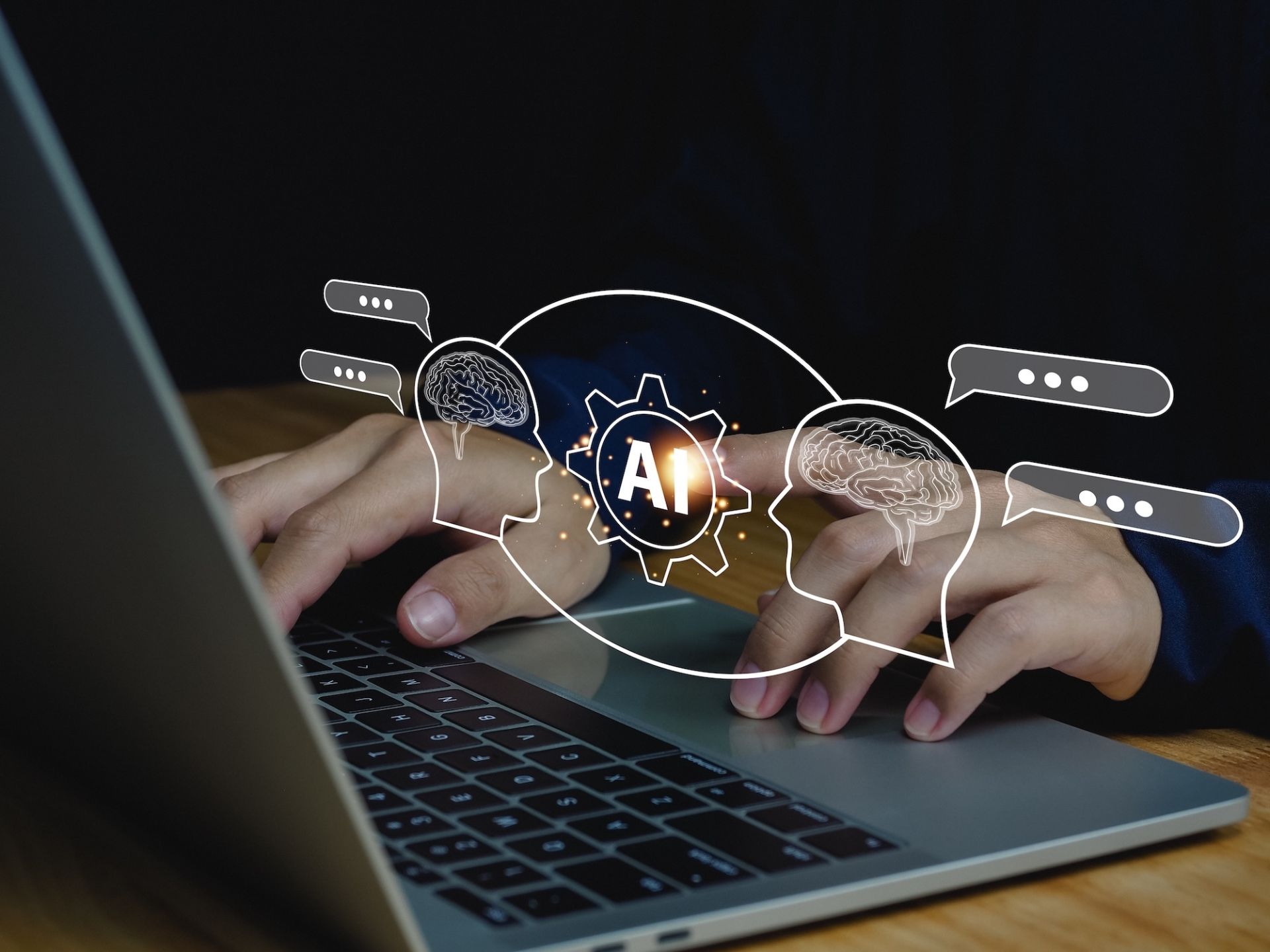Leadership isn’t about knowing the right answers — it’s about navigating the messy, unpredictable, high-stakes conversations that shape how teams perform. And in today’s world of hybrid work, fast decision cycles, and constant change, soft skills aren’t just a “nice to have” — they’re what separates real leaders from people just holding the title. In fact,
92% of talent professionals say soft skills matter as much or more than hard skills when hiring.
The problem is, most leadership training doesn’t actually teach those skills. It talks about structure, mindset, and best practices. It shares frameworks and philosophies. And while that’s all useful, it doesn’t get you any better at
holding people accountable. It doesn’t prepare you to have hard conversations under pressure. It doesn’t give you the reps you need to lead well when it counts.
That’s where AI role play comes in. It finally solves one of the hardest problems in leadership development: how to practice real conversations, get real feedback, and actually improve your ability to lead — not just your understanding of leadership.
Until now, we’ve treated leadership like the Super Bowl. We send people out to perform in high-stakes moments without letting them practice first. And then we’re surprised when they don’t deliver. But imagine if the only way to get better at football was to play in the Super Bowl. Or the only way to get better at war was to go to war. That’s how most organizations approach soft skills — by skipping the training entirely and hoping people figure it out on the job.
AI role play changes that. It lets you simulate the conversations that matter most. You can practice difficult moments with a realistic AI partner, get immediate feedback, and do it again and again until it sticks. And you don’t have to block off time with a coach, coordinate a team role play, or hope someone gives you useful feedback after the fact. You can train anytime, anywhere — and level up your leadership skills in weeks, not years.
This post unpacks why soft skills are so hard to teach, how AI makes it easier, and what it takes to build real leadership capability — not just talk about it.
Soft skills aren’t something you can just learn by reading a book. You’ve got to get in there and practice. Because leadership isn’t theoretical — it’s about navigating real conversations, in real time, with real people. And until recently, the best way to build those muscles was through role play with peers or coaches.
But let’s be honest: Traditional role play is incredibly hard to do well.
You’ve got to schedule it. Coordinate people. Make sure the scenario is realistic. Make sure the person playing your employee is actually good at emulating pushback. Then you need someone else to observe and give meaningful feedback. And most of the time, that feedback is surface-level at best — because no one else is actually in the room when you’re setting expectations with Bob or holding Becky accountable.
So what do most companies do? They skip it. They expect people to “figure it out on the job,” or “learn by doing.” And sure, some do — eventually. But that usually means years of trial and error. Years of missing the mark. Years of reinforcing bad habits.
It’s like sending people straight into the Super Bowl with no practice. No coach. No training camp. Just tossing them the ball and saying, “Good luck.”
That’s the reality of leadership development today. And that’s exactly where AI role play flips the model on its head.
For the first time, leaders can practice critical soft skills in realistic, nuanced conversations — anytime, anywhere. They can instant, get consistent feedback that actually helps them improve. They can repeat scenarios, try new approaches, and build confidence before they ever walk into the real thing.
This isn’t just a cool tool. It’s a game-changer. And it solves the biggest barrier to soft skills development: access to meaningful practice.
The only way to get good at something is to practice and get feedback. That’s true in sports, music, public speaking — and yes, leadership. But here’s the problem: the traditional approach to leadership development doesn’t offer either.
Most programs give you frameworks, theories, and ideas. But they don’t give you reps. They don’t put you in the pressure cooker and say, “Okay, now go out try it.” That’s where AI role play changes the game.
It gives you real, repeatable, in-the-moment practice — and feedback that actually makes you better and more confident.
Here’s how it works.
AI role play only works if it feels real. So we’ve built ours on large language models trained to emulate actual workplace behavior — not just serve up agreeable chatbot responses. We had to teach the AI how to be less helpful, more difficult — because that’s how your people act. They’re frustrated. They push back. They don’t always want to play along. That’s what makes leadership hard — and that’s exactly what we built into the simulation.
You need to feel like you’re actually in the conversation, not just playing a goofy video game. If the AI breaks the illusion — if it responds too perfectly or doesn’t push you — it fails. The power is in the realism. You’ve got to struggle, stumble, find your way through. That’s where the learning happens.
Traditional leadership feedback is usually too late, too vague, or too disconnected from the moment it’s supposed to help with. You get your performance review a quarter later and think, “Cool… but where was this when I was actually in that conversation?”
With AI role play, the feedback is immediate and targeted. It’s both qualitative and quantitative — so you know not just what you said, but how it landed. And more importantly, you can course-correct right away. You don’t need more feedback — you need the right feedback that actually solves the problem you’re facing.
Here’s the bottom line: it only works if what you’re practicing maps directly onto real-life conversations. Otherwise, you’re just getting good at beating the AI — not becoming a better leader.
The goal is automaticity — the muscle memory that kicks in when you’re under pressure. That’s why sports teams run the same two-minute drill every week. Not because they love repetition, but because when the clock’s running down, they don’t want to think — they want to act with precision.
That’s what we’re doing with AI role play. Giving you the reps you need, the feedback you’ve been missing, and the confidence to lead in high-stakes moments — without freezing, fumbling, or falling back into bad habits.
There’s no shortage of AI tools out there right now — from slick VR simulations to text-based chatbots and voice-enabled bots. But don’t get distracted by the flash.
The question isn’t “What’s the newest, most advanced tech?”
The question is “Does this actually help someone lead better in the real world?”
Because if it doesn’t nail three things — realistic conversation emulation, relevant feedback, and direct transfer to on-the-job performance — it’s not training. It’s a game.
You can build the most immersive simulation in the world, but if it doesn’t help someone navigate a tough conversation with a frustrated employee tomorrow, what’s the point?
Here’s what does work.
The AI has to feel like a real person. That means it can’t be overly agreeable. It needs to push back, misunderstand, resist — just like actual people do when stakes are high. The moment it breaks the illusion, you’re out of the learning zone.
It’s not about flooding someone with stats. It’s about surfacing the one or two behaviors they need to shift to improve. What escalated the tension? What did they miss? Feedback should solve the real problem that person is facing — not just give them a score.
This part is critical. Practice needs to map perfectly to the real-life conversations someone will actually have. It’s not about beating the bot. It’s about building automaticity — muscle memory that kicks in when things get real.
You’re not trying to win a video game. You’re trying to lead your team better tomorrow.

If you want to use AI roleplay tools to grow your leaders, here’s how to start:
Identify the high-impact behaviors. Focus on moments that matter most — holding someone accountable, delivering tough feedback, navigating pushback, aligning expectations.
Run a baseline assessment. Figure out how each leader handles these conversations today — where they’re strong, where they need support.
Get them 30–40 reps with feedback. Based on
Dr. Stefanie Boyer’s research, the sweet spot for mastering a skill is
30 to 40 reps — with real, targeted feedback. You’ll see steady improvement up to 30, a spike between 30–35, and mastery around 40.
Track the real-world shifts. If this works — and it will — you’ll see it. More effective 1:1s. Faster conflict resolution. Stronger alignment. Less guessing. More leading.
This is how you build soft skills that actually stick — not just on the platform, but when the moment comes.
Not all conversations are created equal. Some moments carry more weight — and demand more skill — than others. These are the leadership moments that make or break trust, performance, and momentum.
And they’re exactly where AI role play shines.
Here are the kinds of roleplays that help leaders sharpen the soft skills that actually matter:
Difficult Conversations: Holding someone accountable. Setting expectations. Giving feedback that lands. Resolving tension instead of avoiding it.
Split-Second Decisions: Navigating ambiguity, pressure, or urgency — especially when there’s no playbook.
Listening and Empathy: Actually hearing what’s being said. Responding in a human way, even when emotions are high.
These aren’t just “nice to have” skills. They’re what we call speechcraft skills — the kinds of soft skills defined by what you say and how you say it.
Most industries rely on these every single day. But almost no one actually trains for them.
Instead, people just figure it out as they go. They learn how to avoid getting yelled at. How to get through the day. Not how to actually lead.
But when you can practice — when you get reps in the exact moments that used to trip you up — you learn the right skills, not just survival instincts.
This isn’t just for executives, either. Real-world examples include:
- Barbershops using AI roleplay to help stylists rebook clients or offer additional services.
- Medical front office staff practicing how to handle tough calls — without pulling the dentist or vet out of the chair.
- Restoration contractors learning how to show real empathy when stepping into a flooded, damaged home.
These are make-or-break moments. The kind of moments most people are just thrown into.
But when you train the skill — when you’ve practiced it 30, 40, 50 times — you stop white-knuckling it and start owning it.
Remember: You don’t need to be perfect. You need to be practiced.

- Leadership soft skills are notoriously hard to teach.
- Traditional roleplay works — but it’s expensive, time-consuming, and hard to scale.
- AI roleplay gives you real practice and actionable feedback, anytime, anywhere.
- You don’t need years of experience. You need repetitions.
The good news is that it doesn’t take years to level up your soft skills anymore. With AI role play training, you can become excellent in weeks. Not because of time, but because of iterations.
This isn’t just the future of leadership development. It’s what leadership has always needed. And now, we finally have the tools to deliver it.


